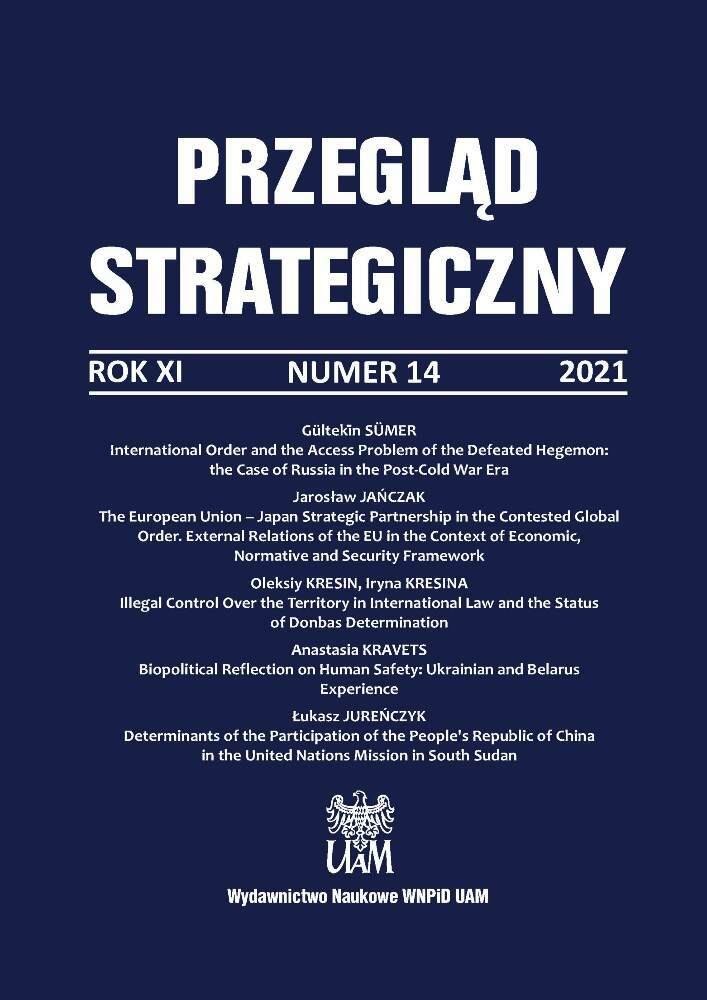Abstract
The study is aimed at analyzing methods of country’s debt security evaluation, developing methodic approach towards estimating the level of debt security based on the calculation of the integral index, and assessing the level of debt security of CEE countries on the basis of the proposed approach. A method of calculating the integral debt security index of the country is developed, taking into account generally accepted thresholds of indebtedness and solvency indicators and the trend of countries’ increasing dependence on external borrowing.
The proposed approach is practically tested in assessing the level of debt security of CEE countries. It is determined that the group of CEE countries is differentiated by the state of indebtedness and solvency. The highest level of debt security is demonstrated by Bulgaria, the Czech Republic and Estonia, the worst situation with the debt security is formed in Slovakia and Slovenia. Based on the analysis of the dynamics of integral debt security indices for 2007–2019, the grouping of CEE countries by the level and zones of debt security, the trends of deterioration of the region’s debt security in 2010–2015 and its improvement in 2016–2019 has been found out. The proposed approach is universal one; it can be used to calculate debt security indices and to provide comparative studies of the debt sector of any country or region. It can also help to identify weaknesses in country’s debt security that is critically important for reasoning the public policy measures to ensure a proper level of debt security.
References
Bökemeier B., Stoian A. (2018), Debt Sustainability Issues in Central and Eastern European Countries, “Eastern European Economics”, Vol. 56, No. 5.
Bulatova O., Chentukov Y., Marena T., Shabelnyk T. (2020), The impact of global financial transformations on the economic security of Central and Eastern European countries, “Public and Municipal Finance”, Vol. 9, No. 1.
Bulatova O., Trofymenko M., Karpenko O., Fedorov E. (2020), The external component of national economic security, “Przegląd Strategiczny”, Issue 13.
Buzan B. (1991), People, States & Fear: An Agenda for International Security Studies in the Post-Cold War Era, Pearson Longman, London.
Caner M., Grennes T., Koehler-Geib F., Koehler-Geib F. (2010), Finding the Tipping Point – When Sovereign Debt Turns Bad, Policy Research Working Paper, Vol. 1.
Chentukov Y., Marena T., Zakharova O. (2021), Challenges and threats to the debt security of Central and Eastern European countries, “Środkowoeuropejskie Studia Polityczne”, Vol. 2.
De la Torre J., Neckar D. H. (1988), Forecasting political risks for international operations, “International Journal of Forecasting”, Vol. 4, Issue 2.
Dudin M. N., Fedorova I. J., Ploticina L. A., Tokmurzin T. M., Belyaeva M. V., Ilyin A. B. (2018), International practices to improve economic security, “European Research Studies Journal”, Vol. 21, Issue 1.
Handbook on Constructing Composite Indicators: Methodology and user guide (2008), OECD, https://www.oecd.org/sdd/42495745.pdf.
Herndon T., Ash M., Pollin R. (2013), Does High Public Debt Consistently Stifle Economic Growth? A Critique of Reinhart and Rogoff, Workingpaper Series, No. 322.
Hrybinenko O., Bulatova O., Zakharova O. (2020), Financial indicators in the system of economic security of the world countries, “Business and Management 2020”: 11th International Scientific Conference, May 7–8, 2020, Vilnius, Lithuania.
Joint World Bank-IMF Debt Sustainability Framework for Low-Income Countries, https://www.imf.org/en/About/Factsheets/Sheets/2016/08/01/16/39/Debt-Sustainability-Framework-for-Low-Income-Countries.
Kharazishvili Y. (2014), Methodological approaches to economic security evaluation, “Nauka ta naukoznavstvo”, Vol. 4.
Makarchuk I., Perchuk O., Yaremenko L. (2017), Modern state and ways of improving debt safety of Ukraine, “Finansovo-kredytna diialnist: problemy teorii ta praktyky”, Vol. 2.
Marena T. (2020), Poland’s Financial Sector Development in Terms of Global Financial Transformations, “Research Papers in Economics and Finance”, Poznań University of Economics and Business, Issue 3.
Marena T. V., Peronko A. M. (2019), Development of Scientific and Methodical Approaches to the Assessment of the Debt Security of Ukraine, “Bulletin of Mariupol State University. Series: Economics”, Vol. 18.
Pro zatverdzhennia Metodychnykh rekomendatsii shchodo rozrakhunku rivnia ekonomichnoi bezpeky Ukrainy: Nakaz Ministerstva ekonomichnoho rozvytku i torhivli Ukrainy vid 29 zhovtnia 2013 r. № 1277, https://zakon.rada.gov.ua/rada/show/v1277731-13.
Redo M. (2018), Comparison of external exposure of Central and Eastern-European states as a factor threatening financial security of their economies, “Historia i Polityka”, Vol. 24.
Reinhart C. M., Rogoff K. S. (2010), Growth in a Time of Debt, “American Economic Review”, Vol. 100(2).
UNCTADstat, https://unctadstat.unctad.org/EN/.
Varnalii Z., Onyshchenko S. (2016), Suchasni tendentsii strukturnykh skladovykh finansovoi bezpeky Ukrainy v umovakh hlobalnykh peretvoren, “Formuvannia rynkovoi ekonomiky v Ukraini”, Vol. 35, No. 1.
World Bank Open Data, World Bank Group, https://data.worldbank.org/.
Wysocki M. (2017), Sustainability of public debt stock in transition economies in Central and Eastern Europe countries in terms of solvency, “Economic Studies”, No. 1 (XCII).
Zorell N. (2017), Large net foreign liabilities of euro area countries: Risks, prospects and policy options, ECB Occasional Paper Series, No. 198, https://www.ecb.europa.eu/pub/pdf/scpops/ecb.op198.en.pdf.

